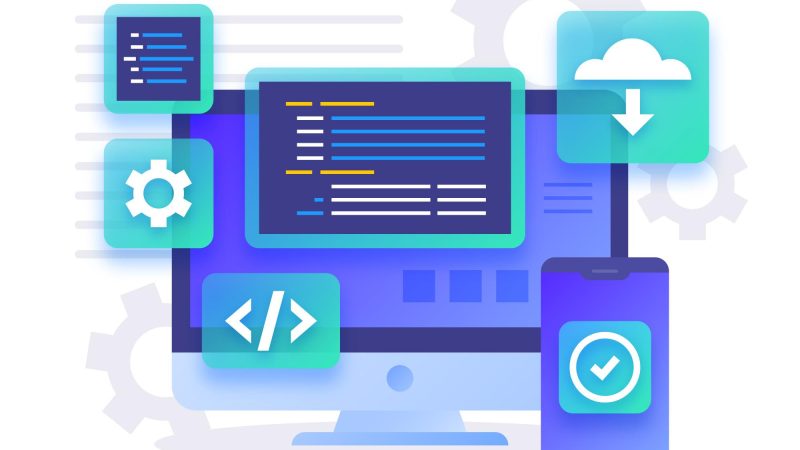Optimizing User Experience: The Importance of Responsive Preview Modes in HTML Editors

You have heard this far too much, and for good reason. Web design is a part of the new wave that’s taking over the development world. As such, there is an ever-increasing need for a responsive web design. Businesses rely heavily on their websites to generate revenue. This allows them to cater to a number of users with various devices, such as smartphones, tablets, or desktops. But what would happen if the HTML editor JavaScript tool doesn’t ensure their content appears optimized for each platform? They would lose their customer base rapidly.
Understanding this aspect allows developers to optimize their development process. With these responsive and versatile websites, their projects yield positive results that business owners love. On the other hand, a non-responsive design can be a huge turn-off for users and increase user frustration. This leads to poor SEO and user engagement scores.
This article covers the responsive preview modes in HTML editor JavaScript tools. This solution allows users to see how their content looks in real time and how it adapts to various screen sizes. We’ll also have a look at how these tools multiply user experience, increase user engagement scores, and streamline content creation. So, buckle up for a value-filled and thrilling ride.
Understanding HTML Editor JavaScript
As a modern developer, you already know how HTML editor JavaScript tools influence web development. They allow you to write and modify HTML code directly within your browser. Sounds fun being a developer. Anyway, these tools also play a key role in content management systems (CMS) and website builders. But how?
By providing a platform for users to create and edit web content easily. Sounds pretty exciting, right? It is. Seamless integration of these editors allows developers to use a powerful adaptive interface to make their web design process creative and productive. They get the freedom to develop pages, customize styles, and add their creative flair to their sites, which the end-users love.
The Necessity of Responsive Preview Modes
You must have heard of WYSIWYG editors, right? If you have, you know how helpful they are in the interactive editing of content. But, there’s a shortcoming to them. They don’t show you how the content will appear across different sizes. This may seem minor, but it can cause major issues. Imagine having content that looks perfect in the editor on a desktop, but as soon as you open it on a mobile screen, it shows a poor display.
To avoid this lack of a mobile-friendly design, developers must look to a responsive preview mode. What’s this? Well, it’s as the name says. It provides a real-time preview or feedback that shows how the edits and layouts will appear on various devices. This helps developers ensure the content is placed as needed. They can also make sure that end-users with all types of display options will get the same amazing UX.
Froala’s Approach to Responsive Previews and Other Examples
Froala’s HTML editor is built to tackle the issue of incorrect displays. Its responsive preview feature makes the lives of developers much easier. It allows them to see real-time content on different devices directly within the editor. How to access it? Simple, through the editor’s toolbar. You have the option to alternate between different device previews to see if your design is optimal. Froala has prepared in-depth documentation for developers looking to use this feature readily.
Other popular editors, such as CKEditor and TinyMCE, have also incorporated such preview functionalities. This signifies a very positive trend in the field of web design tools. As a developer, it’s incumbent upon you to keep up with these trends. These features are all aimed at creating a better UI/UX for end-users that ultimately turns into revenue for businesses.
Benefits of Responsive Preview in HTML Editor JavaScript
Responsive preview modes in HTML editor JavaScript significantly improve the development process. The benefits they provide include
Improved Content Accuracy
Responsive previews help developers determine if the content has a problem before it goes live. Again, this covers all types of displays. Once the developers ensure that all elements appear as they are supposed to, the launch becomes significantly better. Moreover, there is less likelihood of post-launch errors.
Streamlined Workflow
Responsive previews help you reduce manual testing on multiple devices. This not only saves time but also improves the functional efficiency of the web design. Since you can see the changes happening live, you can make decisions that will work in your favor and produce a better user experience for end-users.
Enhanced UX
User experience is the name of the game in web design. With preview functionalities, even non-technical creators can significantly improve their content. They can adjust content’s text and layouts to guarantee a good user experience across formats.
Implementing Responsive Preview: Tips and Best Practices
Here are some tips and best practices for a robust implementation:
Utilize CSS Media Queries
CSS media queries are crucial in creating responsive designs. Using these, you can apply different styling rules based on the characteristics of the device under question. These include width, height, or media orientation. These media queries help adjust the layout, font sizes, and navigation elements to make sure the content is optimized for all devices. Here’s an example:
@media only screen and (max-width: 600px) {
body {
font-size: 14px;
}
}
This CSS rule adjusts the font size for screens with a maximum width of 600 pixels, catering to smaller devices.
Employ Flexible Layouts
Flexible layouts use relative units, such as percentages for width or em for font sizes, rather than fixed units like pixels. This flexibility allows elements to scale based on the screen size. Here’s an example:
.container {
width: 100%;
max-width: 1200px;
margin: 0 auto;
}
This ensures the container is always centered and scales with the screen size.
Integrate Testing Tools
Design testing tools are your best friend. They help you simulate how dynamic content will look on different devices. Tools like BrowserStack or responsive mode in Chrome DevTools provide an environment to test and tweak designs in real-time across various device scenarios. Here’s how you can use Chrome DevTools:
- Open Chrome.
- Right-click and select ‘Inspect’.
- Click on the ‘Toggle Device Toolbar’ to view your content on different screen sizes.
Conclusion
Responsive previews have been a revelation for developers. They have not only improved the functionality of WYSIWYG editors but also made developers’ lives easier. HTML editor JavaScript tools like Froala have improved the web design process tremendously. They ensure that content looks impeccable across all platforms.
As the modern world continues to evolve, the importance of such functionalities will continue to increase. If not already, this feature will become indispensable for developers and content creators alike. Websites will become increasingly responsive, and businesses will become happier and happier.
FAQs
What are responsive preview modes in HTML editor JavaScript?
Responsive preview modes enable users to see how content adjusts in real time across different device screens within the HTML editor.
How do responsive preview modes enhance user experience?
They provide instant feedback on layout changes, making the content creation process more intuitive and user-friendly.
Can I integrate responsive previews with any HTML editor JavaScript?
Many modern HTML editors, like Froala, include responsive preview modes, but integration may vary, so checking the editor’s documentation is recommended.





